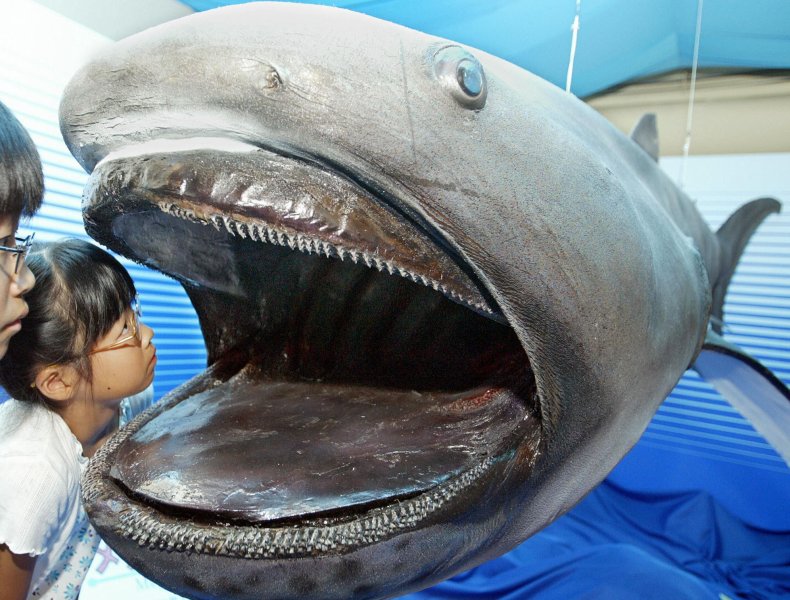Two megamouth sharks have been spotted off the coast of San Diego in an extremely rare sighting. Alex Lappin Baker posted videos of the two sharks, thought to be a mating pair, in the Facebook group Wild Green Memes for Ecological Fiends.
"My friend was fishing off the coast of San Diego and saw not one, but TWO megamouth sharks swimming around at the surface together!" she said in the caption of the post.
"I'm wondering if they could have been mating or if it had to do with our recent tropical storm. I know there is not much known about this species and I wouldn't want this encounter to go undocumented! Especially with TWO OF THEM!"
Megamouth sharks, which can grow up to 18 feet long, are very rarely seen in the wild: according to the Florida Museum, there have only been a total of 269 confirmed sightings of megamouth sharks in the world, not including the two filmed off San Diego this week.
"This may be a mating pair: the second video shows a male (claspers clearly visible) with a damaged left pectoral fin; the first video is of a scarred shark that may be a female (no visible claspers)," said Alisa Schulman-Janiger, a Research Associate at Natural History Museum of Los Angeles County, in a Facebook post sharing the videos.
Megamouth sharks are usually found in deep water, ranging between the surface to as deep as 15,000 feet. Despite being named for their characteristically large mouth, megamouth sharks are filter feeders, swimming with their mouths held open to harvest plankton floating in the water.
In the few data collected by tracking individuals of this species, researchers found that they travel incredibly slowly, only moving at speeds between 0.93 and 1.30 mph.
They were also observed to move up and down in the water column with the sunrise and sunset, which is a pattern seen in other marine animals tracking the movement of plankton in the water column.
"They spend the majority of their time in deep water far from the shore," Dovi Kacev, a researcher with Scripps Institution of Oceanography, told CBS8. "There's still a lot of unknowns about them as far as where they spend their time because we see them so unfrequently."
Due to their rarity, they were only discovered as late as 1976, when one was entangled in a sea anchor near Hawaii. Since then, they are sporadically seen, with Taiwan and the Philippines having the most numbers of sightings.
The megamouth is listed as "Least Concern by the IUCN Red list, mostly due to lack of population data. They occasionally wash up dead on beaches: in June this year, one washed up in the Philippines, potentially after becoming tangled in a fishing net.
"Two megamouth sharks were caught in a gillnet off San Diego in 2018, and the last one documented off of the US coast was also off San Diego (2019); some speculate that southern CA may be a breeding area for them," Schulman-Janiger said in her post. "WOWZA!"


